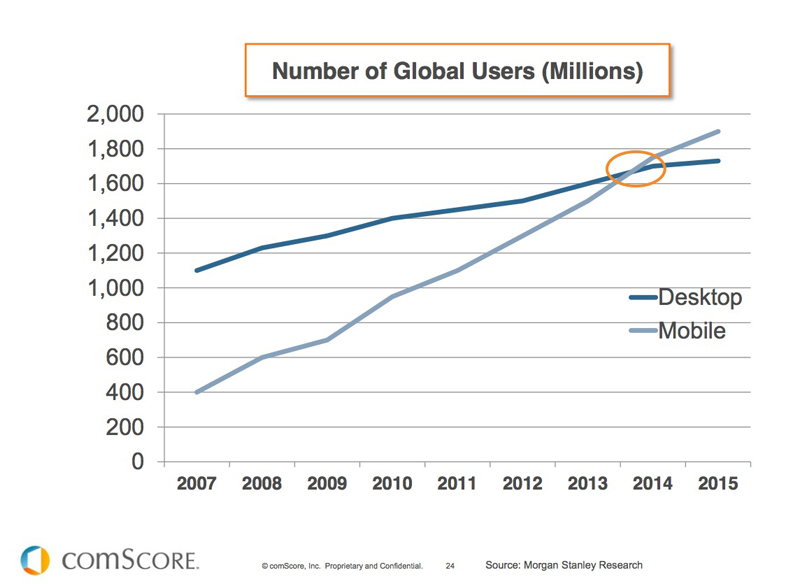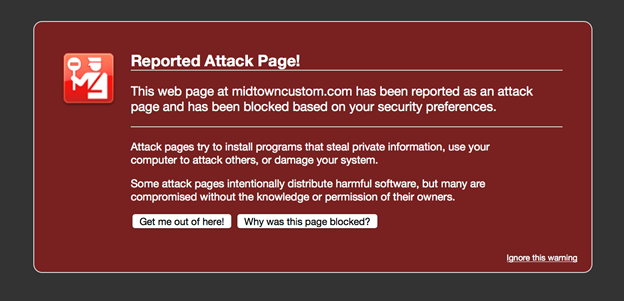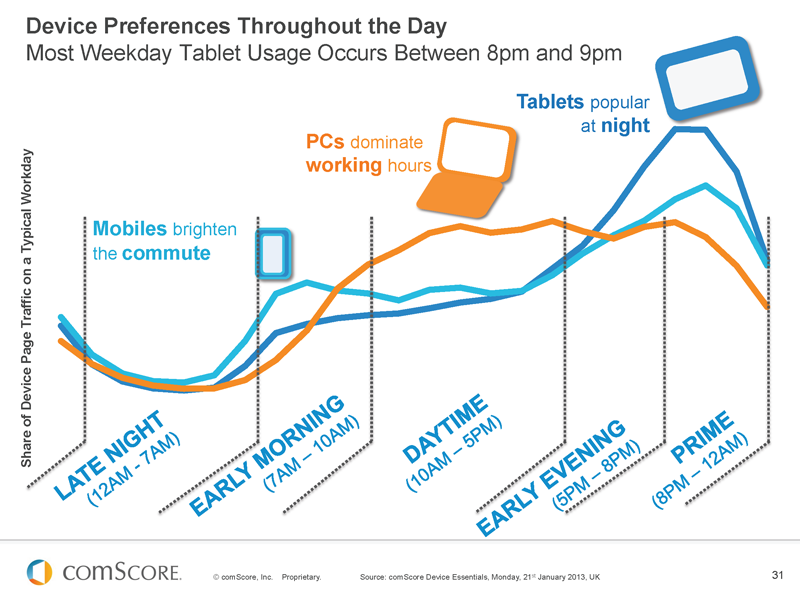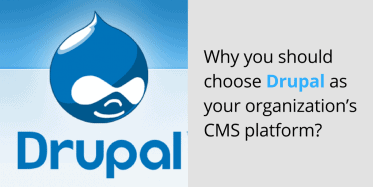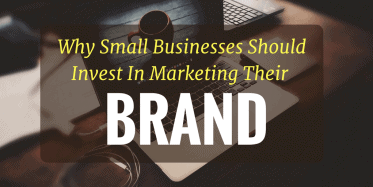3 Common Marketing Tactics that are Hazardous to Your Website and Business
Many business owners understand the importance of how a professional website adds value to their bottom line. Meanwhile, the tactics many have taken are just plain counterintuitive. Why? Because they don’t know the right approach in establishing an effective website in today’s digital landscape. Here are three most common unproductive (and often damaging) approaches:
1. Mobile, Social, and Delete:
The first common approach many businesses take is doing the same things as they have done for the previous 8+ years. They kept their old website the same (which was designed nearly a decade ago) and continue to count only on the word-of-mouth referrals which previously helped generate most of their revenue. They do not yet realize that the market has shifted significantly since the economic dip in 2008, and the changes in mobile technology and advances within social networks have taken a strong foothold in consumers’ daily interactions. Instead of investing in professional online marketing campaigns to maintain and gain customers, these businesses stick with a phone book, hoping many of their customers will find them there. Well, here are the facts: …
Mobile
For a while now, searches from mobile devices have surpassed those from desktop computers. Just in the real estate industry alone, according to National Association of Realtors (NAR) Report 2014 & 2015, 94% of millennials search on websites, compared to 84% of Baby Boomers, and 65% of the other generations. Today, most people search the Internet or ask their friends via social media for realtors or other businesses. Even after a person (let’s call her Jane) gets information on several realtors, she will most likely visit each realtor’s website to learn more about that provider before deciding which company to call. Whether buying, selling, or investing, you can bet consumers will do their diligence in their initial online research.
Now, imagine there is an outdated website which does a poor job of highlighting the value of the business to its customers. This same website also carries very few positive online reviews to provide credibility from clients. How likely is it that the consumer will be interested in choosing that provider over a competitor with an impressive website?
Social
“Word-of-mouse” is much faster and stronger than word-of-mouth. Research has shown that word-of-mouse via social media travels six times wider than traditional word-of-mouth. In another words, it can overshadow the word-of-mouth approach pretty quickly. Here is an example: Jane (in her 40s) asks a friend, Larry, in person and also posts the same question on Facebook regarding whether anyone knows a good real estate agent. Before Larry has finished writing down the contact information of a provider, Jane is already seeing notifications from her friends on Facebook, which can be something like this:
David H: Jane, contact Tom Righton, he is a pretty good realtor. It was very easy to work with him when I sold my house.
Nicky O: Oh yeah, I know Tom Righton, he is a great guy. You should give him a call.
Luke M: Here is another realtor I would recommend: Petty Bettor. My sister spoke highly of her after her home was sold last year.
Julia E: Curious about Petty and just checked out her website and online reviews. A number of reviews seem kind of bad. I would look into that first.
You get the trend. Very quickly, instant notifications from Jane’s friends on social media become so interactive and alive that Jane would naturally pay more attention to the online recommendations than a name on a piece of paper from Larry. Also on social media, Jane can often click on a referral link and it will take her right to the realtor’s website. This is a classic example of how word-of-mouse pulls consumers into a conversation (and referrals) much more quickly and effectively than by traditional word-of-mouth. This also means that businesses which rely solely on word-of-mouth for leads will face greater challenges going forward.
Delete
Many businesses today are still using public email addresses to communicate with their potential customers even though they have a domain name website. For example: The provider might email from [email protected] or [email protected] instead of using [email protected]. Today, consumers are far too familiar with spammers who often use public email address ([email protected], @aol.com, etc.) to send out spam emails. When they see a public email address like these, they delete it in a heartbeat. If it doesn’t look professional and authentic, they won’t touch it. It’s hard enough to get new leads from an outdated website, and if you’re also using a public email address to communicate with prospects, you’re shooting yourself in the foot (or more correctly, the wallet).
2.Template, Hacked, and High Bounce Rate:
The second typical approach people take is choosing a cheap template website and web hosting. Since many customers don’t know the difference between services among web design and hosting providers, they settle for the cheapest offer. They may think a website is just a website, and all web hosting provides the same services. This is a common assumption that can unintentionally harm their business.
Since template websites are cheap, many people have duplicated them to bring their websites online. This creates a large number of websites which look so similar that you can pretty much swap the content (text and images) among them without seeing much of a difference. This results in a clutter of “noise websites” on the Internet, similar to the ‘Lost Pet” flyers you see attached to the light poles on the street. As the number of those flyers increase, the attention of people who walk by decreases. And it is the same with template websites. Therefore, in order to set your business apart from all the “noise” on the Internet, you need to invest in a strategic, custom-designed website to communicate professionally and effectively with your target audience. Otherwise, it is just a waste of money, time, and effort.
There is a common saying: “You get what you pay for.” That also applies to web design and web hosting. Really? Yes. Let me give you some examples. …
Template
Cheap template websites often come with cheap web hosting of about $5 to $10 per month. This type of hosting often comes with a number of catchy phrases like: unlimited bandwidth, unlimited storage, unlimited emails, etc. But one thing those providers don’t mention is: an unlimited risk of being hacked as well. Here is how:
Many of those template sites are built on an open-source CMS platform like WordPress, Drupal, and Magento, which is a great thing to enable website owners like you to make simple changes to your website without coding knowledge. However, those platforms and their plugins (which command each set of the website’s features) need to be upgraded to the current version periodically to close out loopholes where bad hackers (there are also good hackers) can inject spammy script onto your website. Most cheap web hosting providers do not include this kind of CMS periodic upgrades for their “unaware” customers. So, when your website is hacked, there is a fee you to have to pay that provider to clean the spam codes off your website and set it up once again.
Hacked
Sometimes a website has been hacked so badly that Internet browsers blacklist it. In these cases, the site has most likely spread a major virus to those who visited their website. Now, it’s a major problem for that customer’s website, domain and emails (see image below for a browser’s red-flagged message). Often, cheap web hosting providers do not have the knowledge or time to help the customer remove their website from the blacklist. At this point, to the provider, it is less costly to lose the customer than to spend the time to fix a serious matter which they exposed their unsuspecting customer to in the first place.
Although no server is immune from being hacked, a premium web hosting service, with great firewalls and periodic CMS updates, will drastically reduce the chances of your website being hacked. In addition, a great web hosting provider will have comprehensive web hosting plans, which means if your site is hacked, they will not charge you a fee to recover and reconfigure your website.
High Bounce Rate
Bounce rate, by Google’s definition, is the percentage of single-page sessions (i.e., sessions in which the person left your site from the entrance page without interacting with the page).
There are three common reasons for a high bounce rate:
1) The website is sending out spam and/or being red-flagged by Internet browsers (Chrome, Internet Explorer, Firefox, Opera, and Safari).
2) The website does not provide the information desired.
3) The website takes too long to load. There is always a bounce rate percent on a public website, but the bounce rate should stay within a reasonable range for each type of business within its industry.
Cheap web hosting is commonly associated with a high bounce rate because websites occasionally load slowly during high traffic hours when too many websites are sharing the same network of servers. Unfortunately for the average website owner, it’s difficult to know about this without first setting up a Google Analytics account to track visitors’ behaviors on the website.
As a consumer, you know that no one likes a slow website. (Ok, you might like a website that loads slowly if it belongs to your competitor, but that’s another matter!) On the Internet, people’s attention span is getting shorter as the screen size of their mobile device gets smaller. So now you know another reason why cheap web hosting is not cheap at all. It costs you dearly in the number of potential customers quietly leaving (bouncing from) your website right over to your competitor’s site.
Overall, don’t go with the cheap template website and web hosting. You will not be happy to find out that your potential customers are quickly leaving your website or that your website has been compromised. There’s never a good time for any of this, especially not during your peak business season.
3.“Professional Looking” Website, Not Many Leads…The Web Must Be Broken:
The third common approach is hiring a website designer and programmer to design a great looking website with all the bells and whistles. The employees of the company love the new website, but customers are having a hard time. They can’t find the new website when searching with the key phrases highly related to the company’s services or products. Also, the website’s bounce rate is still not getting any better. Why? Let me point out the reasons for you. …
“Professional Looking” Website
The first step toward building an effective website should always start with a strategic website marketer and SEO specialist, not a website designer (even though I love designers). Today, an effective website is the one you build for your customers, not for (or about) your company. When online visitors arrive at your site, (at first) they don’t care about your company’s history or how great it is. They want to know what services or products you have that will benefit or meet their (often immediate) needs. If your web content hit the right spot, they will go in further to learn more about your company; otherwise, they will exit to find another site.
That’s the reason why your website development needs to start with a strategic website marketer and SEO specialist rather than a designer. The designer will most likely know how to design a website that will please you (the customer), but not necessarily how to please your customers, which should be your goal. That said, a strategic website marketer will learn about your business, your goals, and your customers. S/he would recommend the layout of your web pages in the way that will help you communicate effectively with your target audience, while remaining aware of your strategic goals. This person would then provide recommendations (with your approval) to their team of designers and programmers to make sure your website is not only designed and programmed to look good and function well, but that it will also communicate effectively with your customers.
Not Many Leads…The Web Must Be Broken
Many people do not know that there are two types of audiences constantly visiting their websites. One is the search engines’ spiders and the other is human. The first audience (spiders) needs to index your web pages within the appropriate categories before your human audience will be able to find your website when conducting a search. Without that, even if you have a great looking site, the chance of customers finding it when searching online with keywords related to your services or products is very slim.
Therefore, you need a strategic website marketer to help optimize your website with ideal keywords related to what your business offers to make sure search engines’ spiders can index your web pages under the right categories. Otherwise, you just have a “professional looking” website with all the bells and whistles, but not many leads, because customers can’t find you. So, the web is not broken. It’s just a matter of finding a professional web design and SEO company that understands the best strategic marketing approach for your project.
If you are a small business with a highly specialized niche market and little competition for the keywords you want to rank your website, your chance of seeing good results from the advices above would be pretty good. However, if your business is in a very competitive market, then you may need a team of strategic online marketers to professionally promote your business for better results.
By now you should understand the common reasons why many businesses are not seeing good results with their business websites. I hope you were able to read this article before making a decision to invest in a responsive website design or re-design project. If you find this article helpful, please share it with others so they can also avoid the common mistakes many others have made. Thank you!


